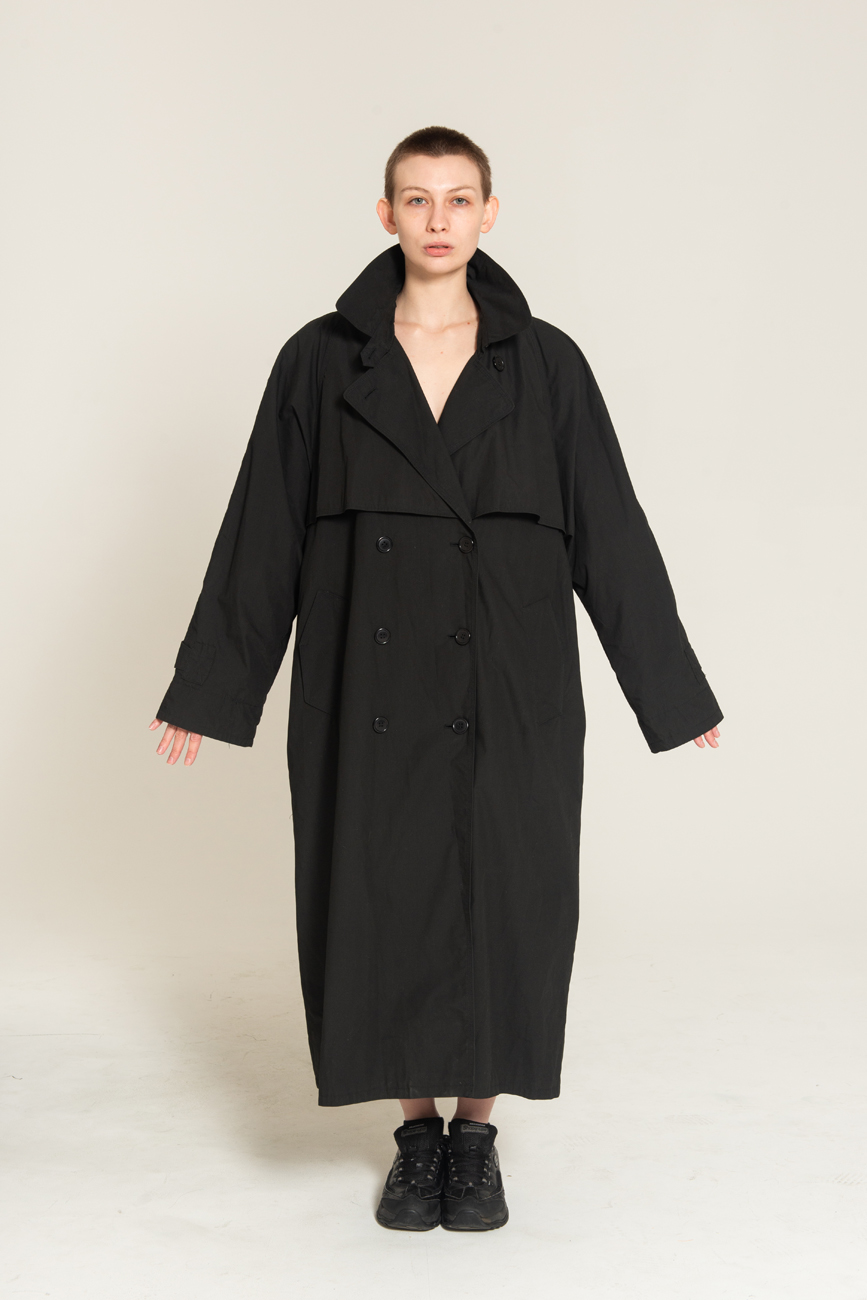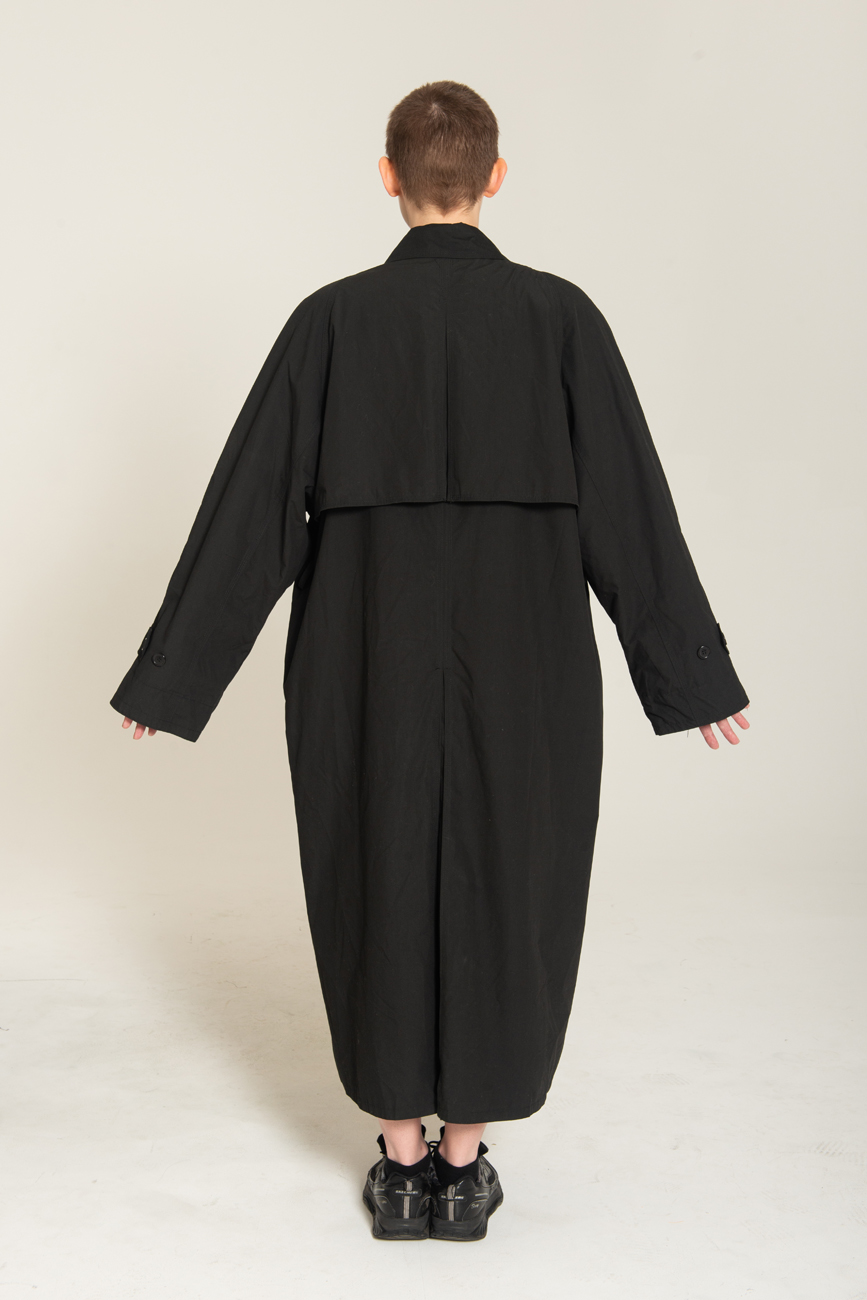Remie Cibis
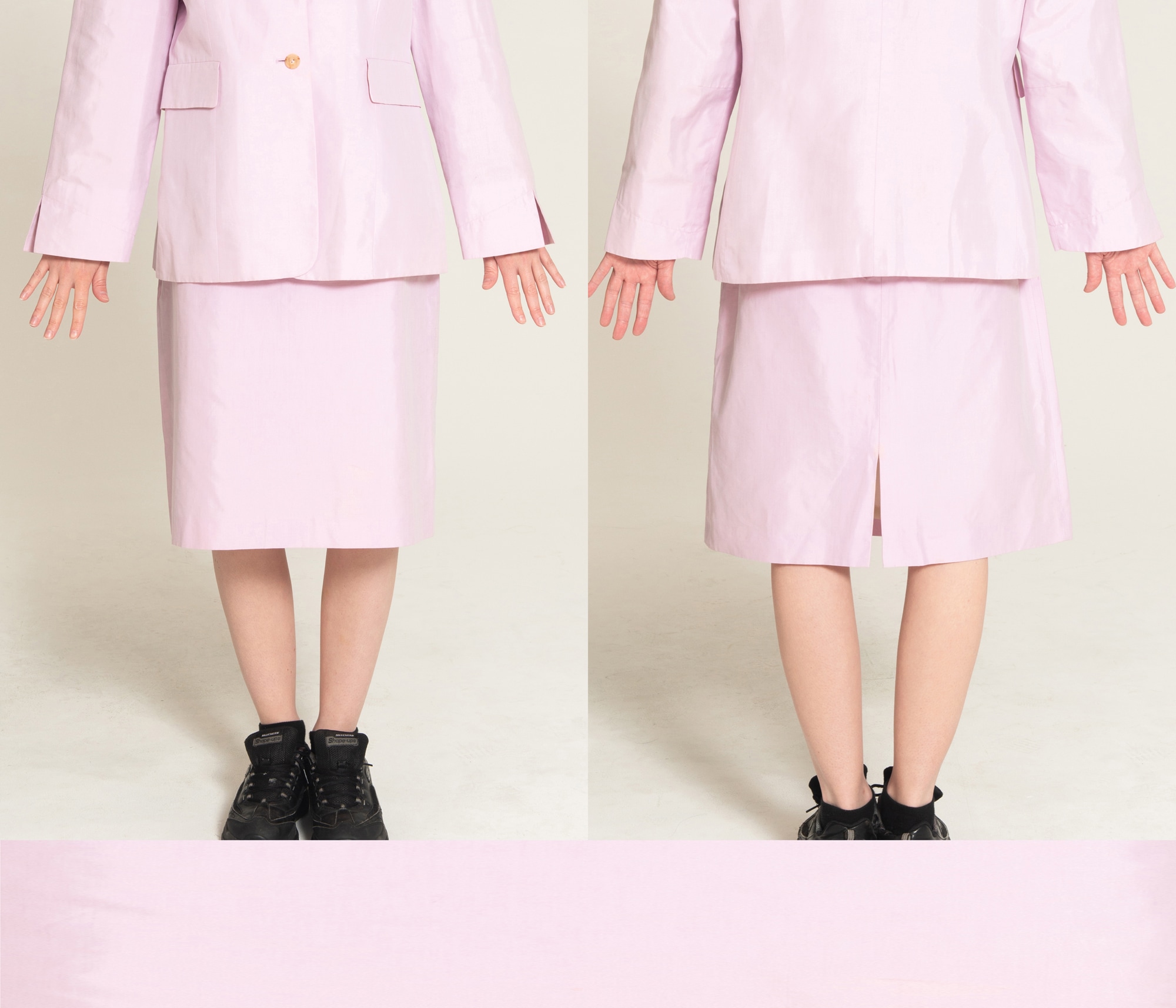
Remie Cibis is a practice-based fashion researcher and freelance pattern maker who lives and works in Melbourne. Her work explores how garments can be understood as images and asks how we see ourselves through our clothes. Remie’s work has been shown as part of the Virgin Australia Fashion Festival, L’Oreal Melbourne Fashion Festival and Melbourne Spring Fashion Week, as well as at various galleries including Conical, Kings Artist Run and Federation Square’s FedTV.
In addition Remie works as a freelance pattern maker and teaches into RMIT’s Bachelor of Fashion (Design) program. She holds a Masters of Fine Art (Interdisciplinary Arts Practice) VCA & MCM Melbourne University 2017, a Bachelor of Design (Fashion) (Hon.) RMIT University 2011 and a Bachelor of Fine Art (Painting) (Hon.) Monash University 2006. Remie is a current PhD Candidate with RMIT University’s School of Fashion and Textiles.

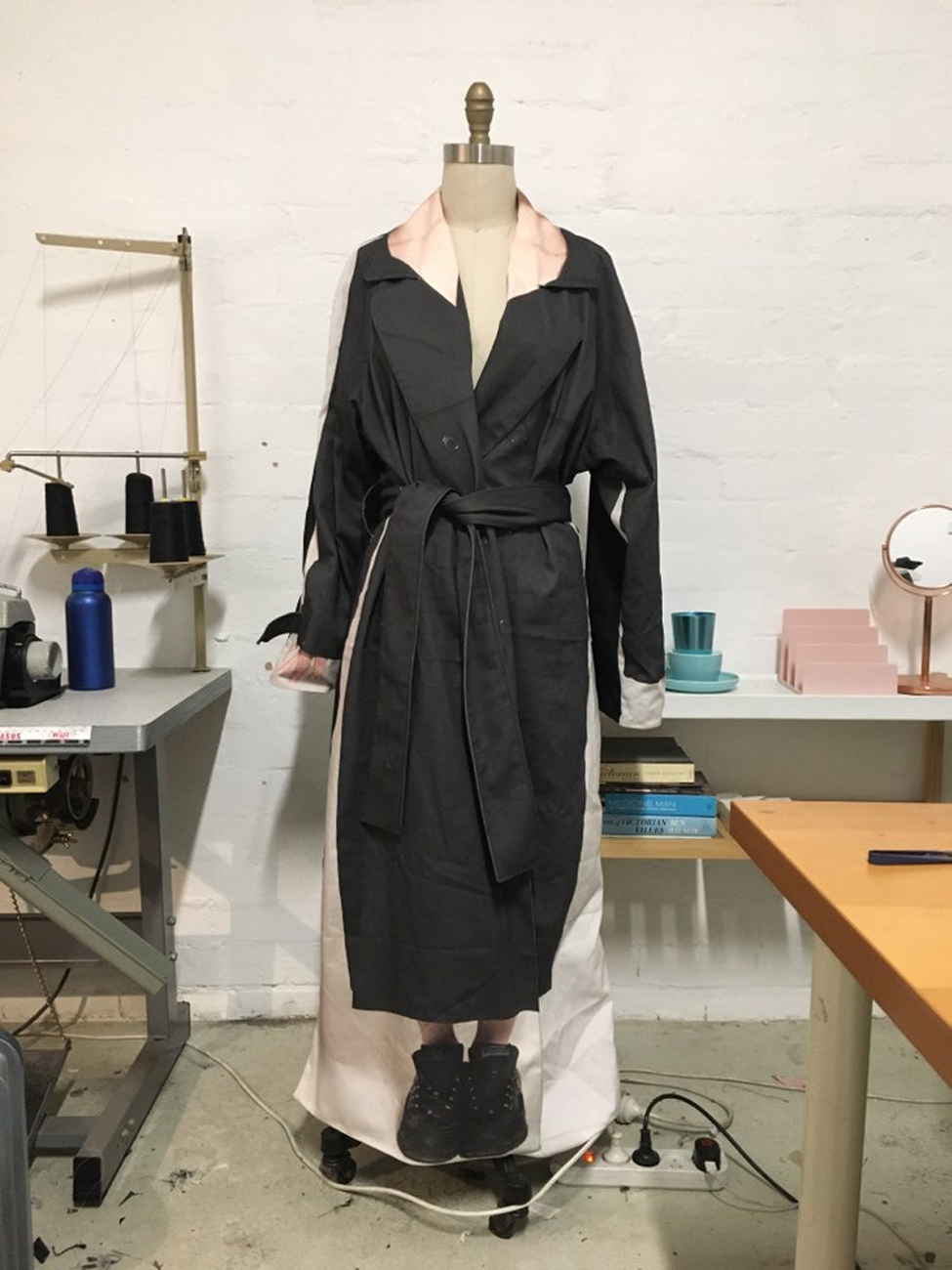
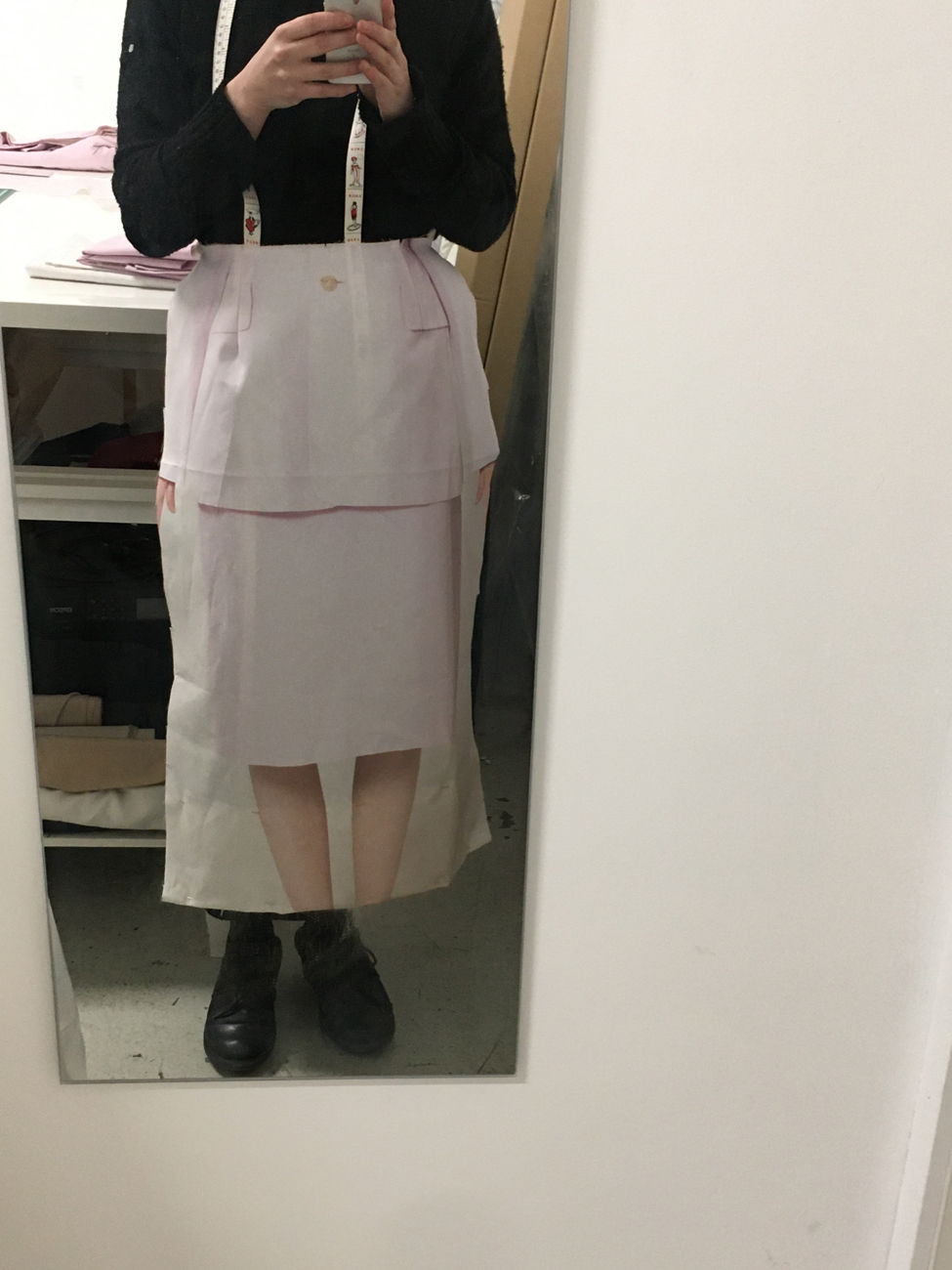
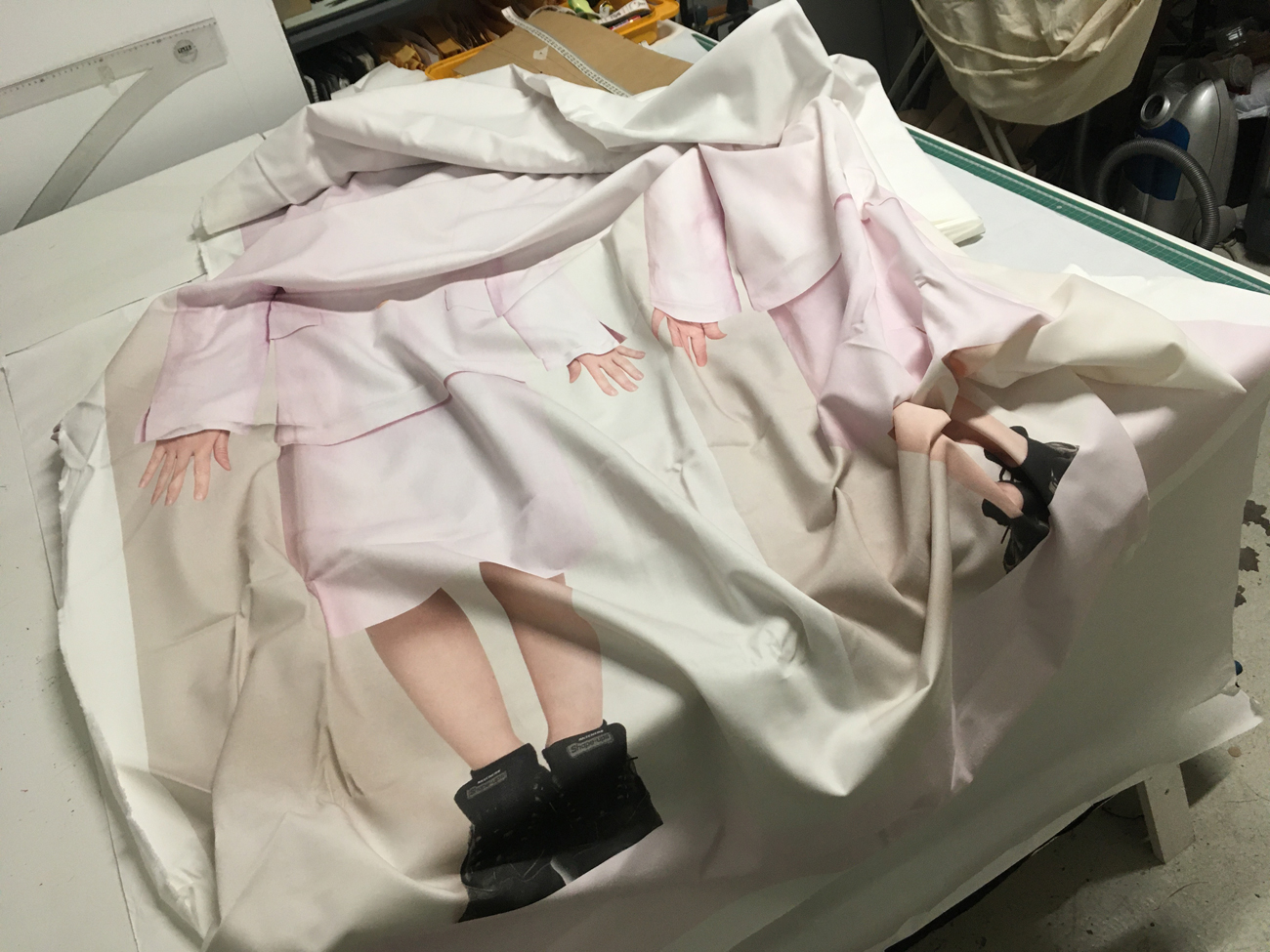
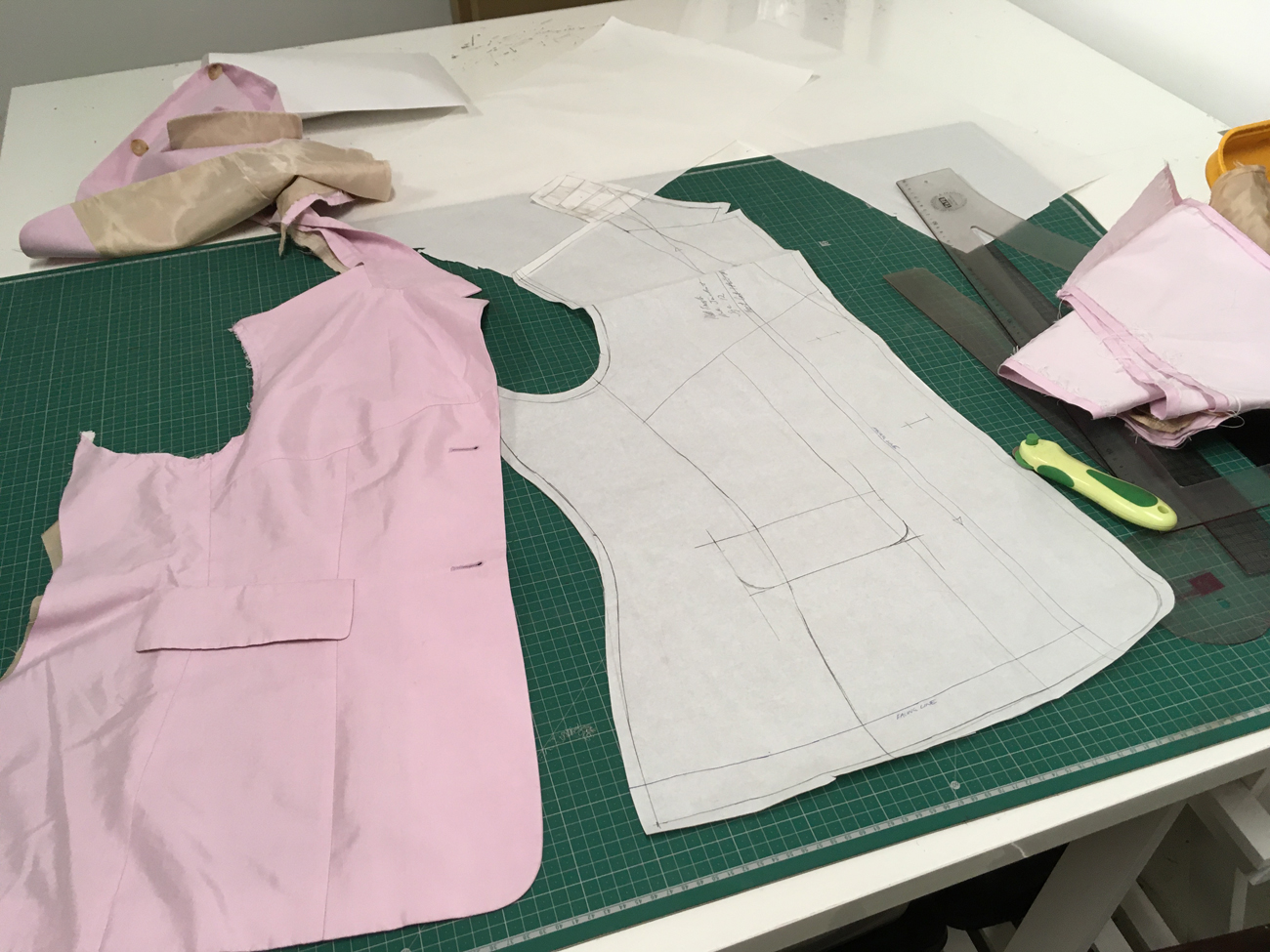
REMIE CIBIS INTERVIEW by Shannon Green:
sgI would like to begin by asking how would you describe your own practice? And how has your own personal background in design informed the work produced in collaboration with Matt Finish?
rcMy work explores how garments can be understood as images and asks how we see ourselves through our clothes. For example, I recently remade a series of pieces from my own wardrobe using a standard office scanner to translate them in two-dimensional copies. The scans were then printed onto fabric and sewn up. The aim was to make visible the space between the garment and its image, and to show where the image might fail to capture the multidimensional form of the garment itself. I was interested in bringing a similar approach to this collaboration with Matt Finish, but working with photographs instead of scans. This seemed to make sense given Matt Finish’s photographic lens.
sgFrom existing knowledge, I understand that you create, and grade patterns did this inform the project?
rcYep, that’s me! I’m a bit of a pattern geek, and it definitely informs the way I design and think about fashion. I guess I see patterns as images too; as flattened, two-dimensional representations of clothes and bodies. So, when I was thinking about substituting the front or back of these garments with photographs, it was really about replacing one form of representation with another.
sgWhat was the inspiration for the final collection? How did you devise the concept of the final product?
rcI guess the main idea was to make something that represented the meeting point between Agnieszka’s photographic perspective and my own garment-oriented work. You could say that this has been achieved in a rather literal way, with one side of each piece produced according to the methods of the garment industry and the other resulting from photographic practices.
sgMatt Finish has an ethos of sustainability, with the intention to give new life to existing garments. With this renewable consideration were you having any particular conversations around this project with yourself and the people around you?
rcWorking with Matt Finish’s philosophy of sustainability in mind, I had to recalibrate some of my usual thinking and approaches in order to preserve the existing garments and not just the forms or ideas they represent. I often use found-garments and archetypal garment shapes as a starting point in my own work, as they embody the ideologies of the societies that produced them. By redesigning pre-existing clothes, I try to propose new ways of representing fashion and the body, or at least to make visible those that we’re already subject to.
In this collaboration the original garment and new garment have become sandwiched together. This both maintains and transforms the original; producing a double image (garment and photograph), as well as a secondary double, in the sense that there are now literally two suits, for example, where before there was only one. I’m not sure if this is a bit of a failure in terms of upcycling, as I’ve actually ended up producing more clothes which could easily result in more waste. I guess I just have to hope that people like them and that the ideas embedded in them add to them in some way, making them more valuable and worth hanging onto rather than sending back to the op-shop again.
sgHow do you incorporate sustainability within your own brand, are there any parameters you set in place to help create a sustainable production and final product?
rcI don’t really have a brand. I work in a more project-based way, where I stage workshops, performances and events. These don’t really produce a lot of waste, but you can’t really call them zero-waste either. To be honest sustainability has never been a big consideration for me. I guess I’ve been caught up in addressing other fashion issues, in particular problems of representation and gender. It’s not great though. You can’t really work at addressing one issue, while contributing to another. This is something I need to become better at.
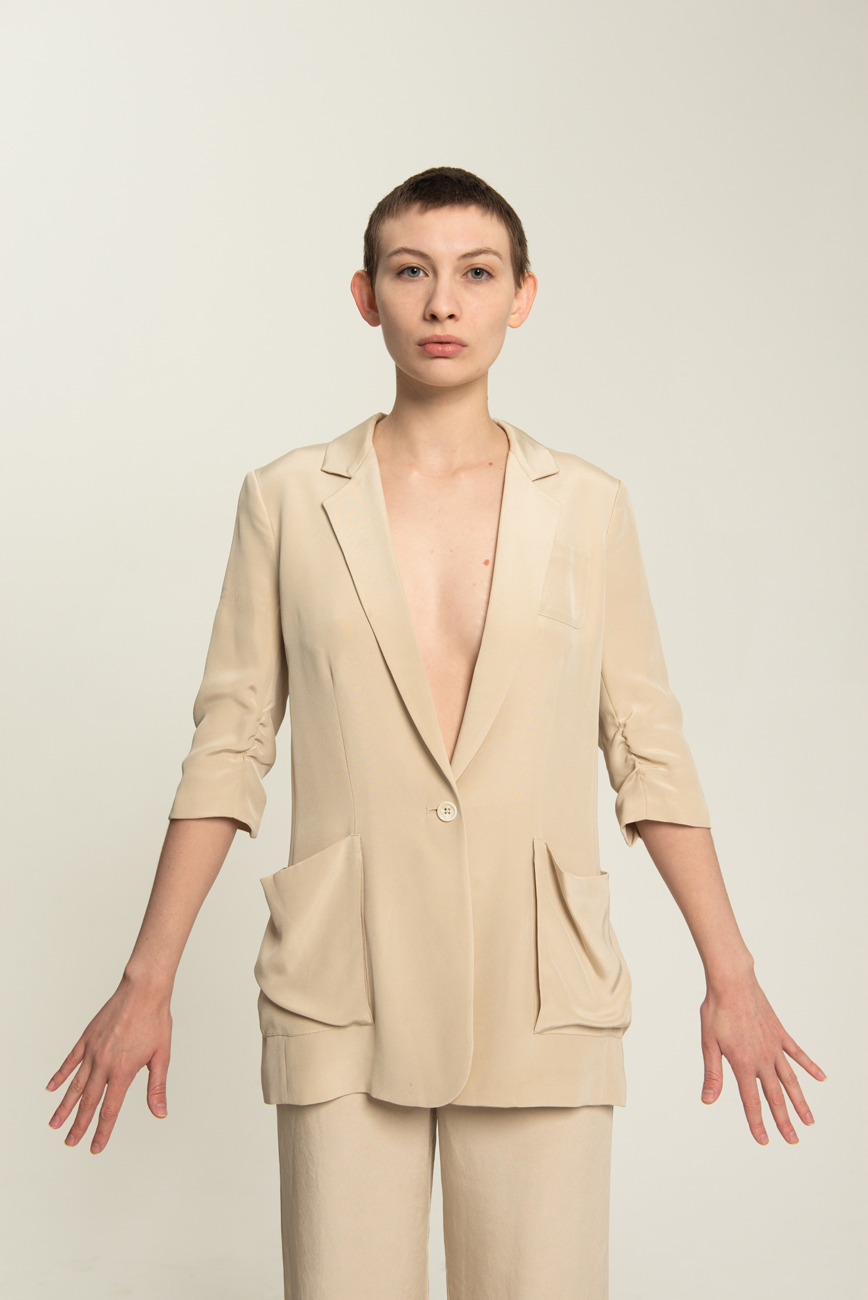

sgWhilst Matt Finish centres around upcycling existing found clothing, it also in a sense upcycles existing imagery, recontextualising the traditional surface of images. How did you select which images to work with? Or did this not affect the overall product? Was there anything particular that you looked for in the images when selecting which ones to work with?
rcAgnieszka actually took some new photos for me to work with for this project. Photos of the garments themselves. We decided to do this because of the conversations we’d been having about how garments are also types of images. Because we wanted to work with the perspectival limits of photography, and to redesign the garments with this in mind, Agnieszka shot a series of look-book or web-shot type photos. These images showed the clothes on a model, from front and back, and were later used to substitute for the front and back of each garment.
sgDid the images have any impact on the designing process? Aside from the image incorporation, what was the design process like to recreate upcycled garments?
rcThe original garments directed the form of the new designs. Given that the intention was to reimagine physical clothes through images, the patterns for the new pieces were created as trace-offs of the originals. This is a common method used by brands to copy designs from other labels. A practice that results in the circulation of more and more copies. Like images on the internet.
Of course, the images impacted the design process too. After creating the basic trace-offs, I then flattened and simplified them as much as I could. I wanted to maintain the superficial, photographic quality of the prints without giving them too much form. For example, I didn’t cut any pieces for the pockets. They exist only as part of the print where the garment has been replaced by the photo.
sgPart of the project involved selecting pieces to upcycle from a pool of secondhand garments, how did you determine which garments to use, and were you drawn to anything in particular?
rcI was keen to work with pieces that had some level of dimension and physical presence that could be flattened photographically. I didn’t really want to work with t-shirts, which are already so flat and so much about images. I chose instead to work with pieces that had collars and pockets and overlaps. These were mostly jackets and suits.
sgMatt Finish being a sustainability-conscious project, did you come across any waste and if so how did you manage it?
rcCutting out the new pattern pieces from the digital textile prints produced a significant amount of waste. It’s a real problem when it comes to making fitted clothes. In order to produce a form fitting garment, areas of fabric are usually cut out and thrown away. Instead of doing this, however, the off-cuts from this collaboration have been collected up and added to the Matt Finish archive so that they can be used for a future project.
sgIs there something exciting about creating limited edition garments?
rcAbsolutely! That’s’ pretty much the only type of garments I make anyway. Although if I had more of a mind for business, I’d love to make multiples too. It’s one of the things I love about fashion; its technological reproducibility. A garment is kind of like a photograph and a pattern is kind of like a negative. So, it’s inherently multipliable. You can make it over and over again, make it affordable and give everyone a chance to experience it. I really like that democracy. Although, it has obviously lead to some serious issues in terms of waste and the devaluing of garments and fashion labour.
sgWhat was the most enjoyable part of the design process with Matt Finish?
rcThis interview! But not really … I hate talking about my work. I guess asides from the less formal conversations and making the garments, I also really enjoyed unpicking the originals. It took a long time; days, and was kind of like a slow meditation on each piece. Following its processes of making and its form. Fashion’s usually so fast, it was nice be slow.
